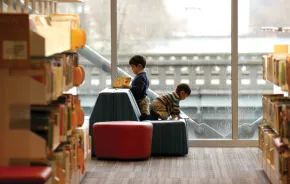 While alcohol and marijuana are by far the most popular substances used by youth who choose to get high, there is concern about increases in the number of young people turning to heroin.
While alcohol and marijuana are by far the most popular substances used by youth who choose to get high, there is concern about increases in the number of young people turning to heroin.
In the most recent Healthy Youth Survey completed in King County (given every two years in schools), just under four percent of 10th and 12th grade students reported using heroin. Youth Eastside Services, one of the largest adolescent drug and alcohol treatment programs in the area, had no clients reporting heroin use in 2010; in 2012, 6% of said they used heroin.
The King County Helpline had nearly 1,200 calls about heroin in 2012, the #1 call regarding drugs. Prescription pain killers were #2, with over 800 calls. Treatment for heroin addiction also rose substantially in King County between 2010 and 2012.
While these numbers may seem small, they are particularly concerning because heroin addiction is one of the most difficult to treat due to the painful withdrawal symptoms and strong cravings. It usually requires medically assisted detox, and even with that, treatment has a high failure rate. There is also potential for contamination of the drug, which can cause life-threatening reactions.
Most young heroin users start with abuse of prescription painkillers. In recent years, the efforts to educate medical providers and parents about the risks of these drugs has led to a decrease in their availability and an increase in the street price—upward of $80 per pill in some cases.
Heroin, by comparison, is relatively cheap—$10 for a hit that will give a person a high for two to four hours, or $20 for a small bag. Typically, young people begin by smoking heroin, which takes nothing more than a lighter and piece of tin foil. Signs of this kind of use include black smudges on hands, clothes, walls or carpet, and wads of tin foil in the trash.
Unfortunately, the addictive nature of heroin tends to result in increased use. The phenomenon known as “chasing the dragon” leaves a user trying to obtain the high they had the first time they tried heroin, which may escalate to shooting up, which is use by injection.
It’s hard for any parent to visualize the same child who wailed over every vaccination willingly inserting a needle into his or her own vein, but I assure you it is happening with teens in our area. Using a needle to inject drugs also comes with increased risks for diseases, such as HIV and hepatitis, from sharing needles. It is also easier to overdose via injection.
As parents, we need to be talking with our kids about all drugs—alcohol, marijuana, prescription medications and heroin. Talk about the risks, the damage to the growing brain and chances for addiction. Studies show that when parents express a strong disapproval for something, kids are less likely to participate in it. For more information on talking to your kids about drugs, and other issues of adolescence, visit SAMHSA.gov or drugfree.org.
 Patti Skelton-McGougan is Executive Director of Youth Eastside Services (YES). YES is a nonprofit organization and a leading provider of youth counseling and substance abuse services in the region. Since 1968, YES has been a lifeline for kids and families, offering treatment, education and prevention services to help youth become healthy, confident and self-reliant and families to be strong, supportive and loving. While YES accepts insurance, Medicaid and offers a sliding scale, no one is turned away for inability to pay.
Patti Skelton-McGougan is Executive Director of Youth Eastside Services (YES). YES is a nonprofit organization and a leading provider of youth counseling and substance abuse services in the region. Since 1968, YES has been a lifeline for kids and families, offering treatment, education and prevention services to help youth become healthy, confident and self-reliant and families to be strong, supportive and loving. While YES accepts insurance, Medicaid and offers a sliding scale, no one is turned away for inability to pay.












